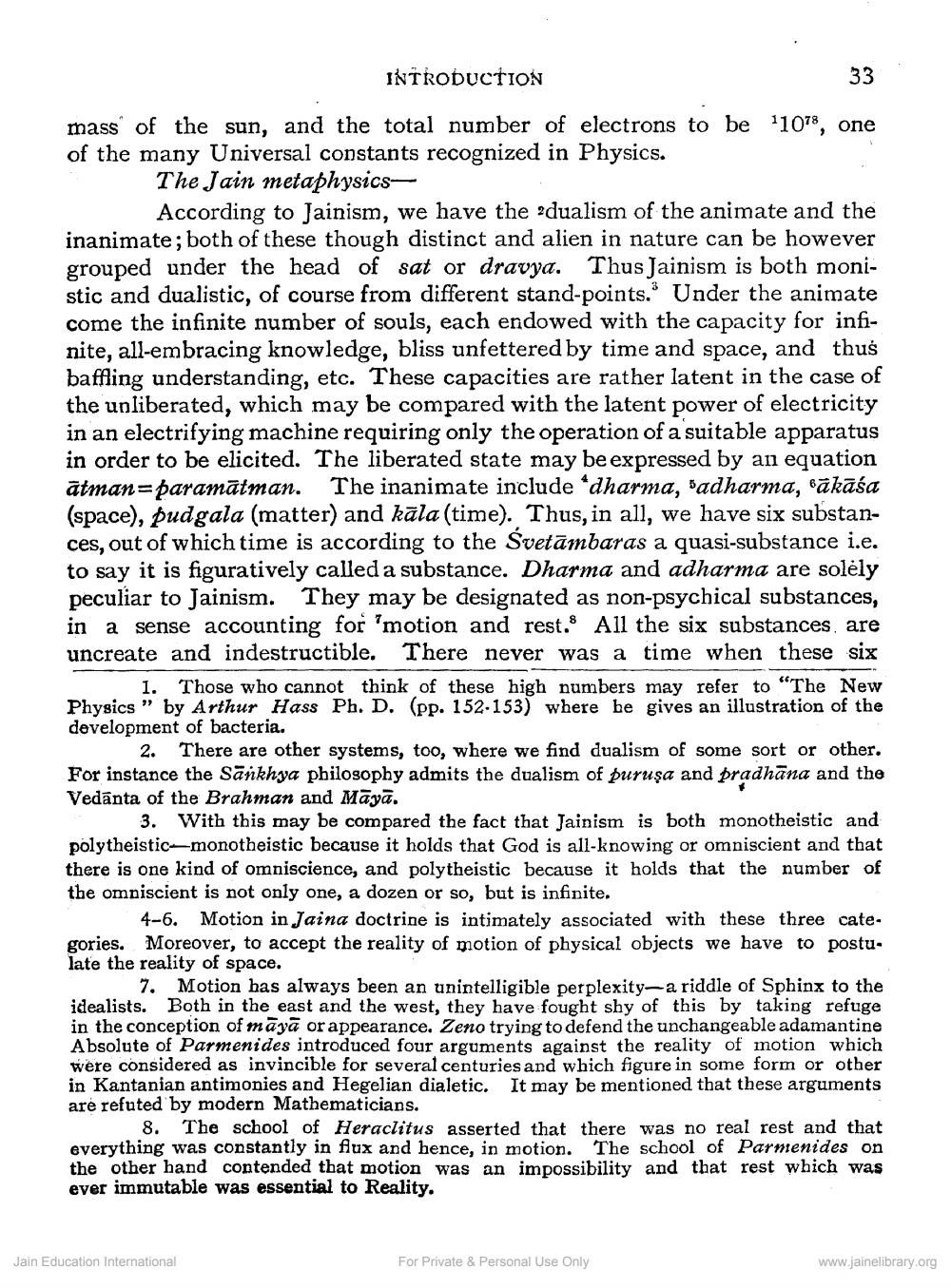________________
INTRODUCTION
33
mass of the sun, and the total number of electrons to be 1078, one of the many Universal constants recognized in Physics.
The Jain metaphysics
According to Jainism, we have the adualism of the animate and the inanimate; both of these though distinct and alien in nature can be however grouped under the head of sat or dravya. Thus Jainism is both monistic and dualistic, of course from different stand-points. Under the animate come the infinite number of souls, each endowed with the capacity for infinite, all-embracing knowledge, bliss unfettered by time and space, and thus baffling understanding, etc. These capacities are rather latent in the case of the unliberated, which may be compared with the latent power of electricity in an electrifying machine requiring only the operation of a suitable apparatus in order to be elicited. The liberated state may be expressed by an equation ātman=paramātman. The inanimate include dharma, Sadharma, bākāśa (space), pudgala (matter) and kāla (time). Thus, in all, we have six substances, out of which time is according to the Svetāmbaras a quasi-substance i.e. to say it is figuratively called a substance. Dharma and adharm peculiar to Jainism. They may be designated as non-psychical substances, in a sense accounting for 'motion and rest. All the six substances, are uncreate and indestructible. There never was a time when these six
1. Those who cannot think of these high numbers may refer to "The New Physics” by Arthur Hass Ph. D. (pp. 152-153) where he gives an illustration of the development of bacteria.
2. There are other systems, too, where we find dualism of some sort or other. For instance the Sankhya philosophy admits the dualism of puruşa and pradhāna and the Vedānta of the Brahman and Māyā.
3. With this may be compared the fact that Jainism is both monotheistic and polytheistic monotheistic because it holds that God is all-knowing or omniscient and that there is one kind of omniscience, and polytheistic because it holds that the number of the omniscient is not only one, a dozen or so, but is infinite.
4-6. Motion in Jaina doctrine is intimately associated with these three cate. gories. Moreover, to accept the reality of motion of physical objects we have to postu. late the reality of space.
7. Motion has always been an unintelligible perplexity-a riddle of Sphinx to the idealists. Both in the east and the west, they have fought shy of this by taking refuge in the conception of mayā or appearance. Zeno trying to defend the unchangeable adamantine Absolute of Parmenides introduced four arguments against the reality of motion which were considered as invincible for several centuries and which figure in some form or other in Kantanian antimonies and Hegelian dialetic. It may be mentioned that these arguments are refuted by modern Mathematicians.
8. The school of Heraclitus asserted that there was no real rest and that everything was constantly in flux and hence, in motion. The school of Parmenides on the other hand contended that motion was an impossibility and that rest which was ever immutable was essential to Reality.
Jain Education International
For Private & Personal Use Only
www.jainelibrary.org




